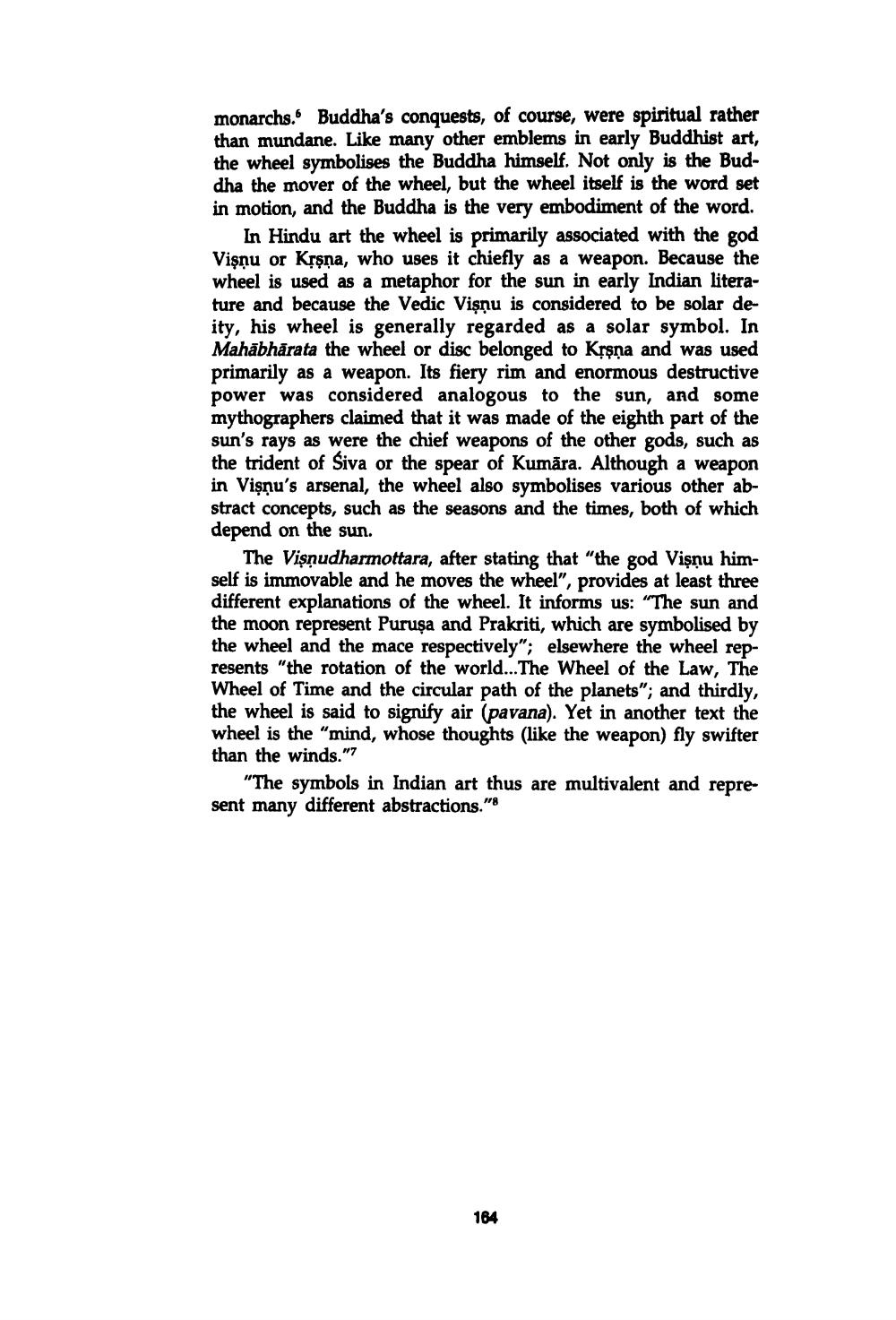________________
monarchs. Buddha's conquests, of course, were spiritual rather than mundane. Like many other emblems in early Buddhist art, the wheel symbolises the Buddha himself. Not only is the Buddha the mover of the wheel, but the wheel itself is the word set in motion, and the Buddha is the very embodiment of the word.
In Hindu art the wheel is primarily associated with the god Vişnu or Krşņa, who uses it chiefly as a weapon. Because the wheel is used as a metaphor for the sun in early Indian literature and because the Vedic Vişnu is considered to be solar deity, his wheel is generally regarded as a solar symbol. In Mahābhārata the wheel or disc belonged to Krsna and was used primarily as a weapon. Its fiery rim and enormous destructive power was considered analogous to the sun, and some mythographers claimed that it was made of the eighth part of the sun's rays as were the chief weapons of the other gods, such as the trident of Siva or the spear of Kumāra. Although a weapon in Vişnu's arsenal, the wheel also symbolises various other abstract concepts, such as the seasons and the times, both of which depend on the sun.
The Vişnudharmottara, after stating that "the god Vişnu himself is immovable and he moves the wheel", provides at least three different explanations of the wheel. It informs us: "The sun and the moon represent Puruşa and Prakriti, which are symbolised by the wheel and the mace respectively"; elsewhere the wheel represents "the rotation of the world. The Wheel of the Law, The Wheel of Time and the circular path of the planets"; and thirdly, the wheel is said to signify air (pavana). Yet in another text the wheel is the "mind, whose thoughts (like the weapon) fly swifter than the winds."
"The symbols in Indian art thus are multivalent and represent many different abstractions."
184




